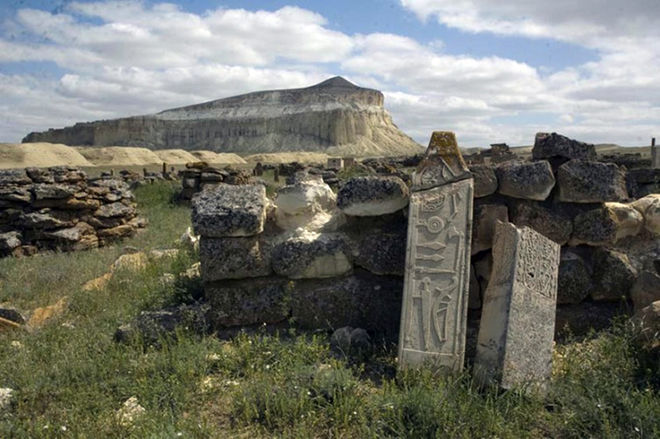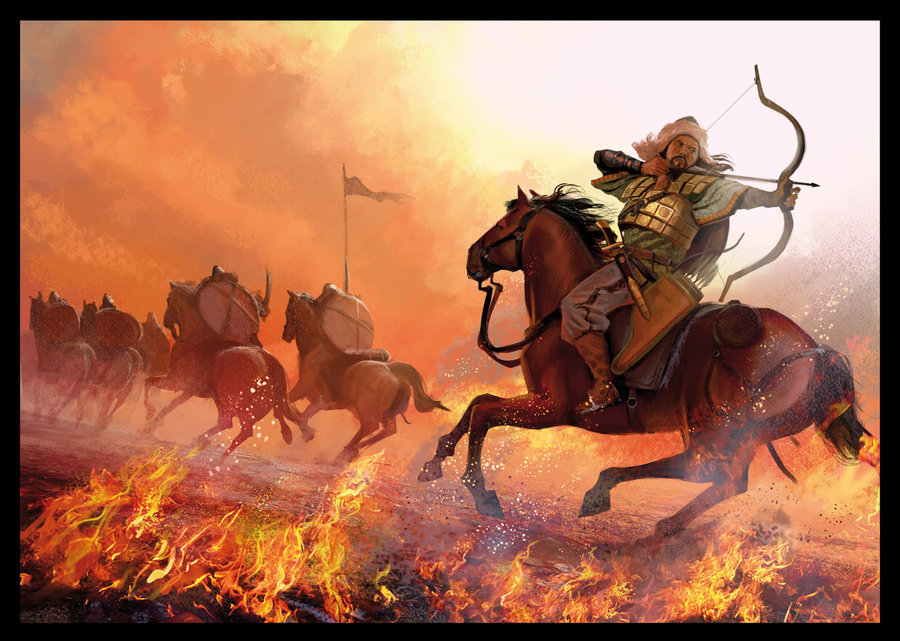
PHOTO: livescience.com
AKTAU, KAZAKHSTAN – In 2010, a man named F. Akhmadulin was wandering along the eastern coast of the Caspian Sea with a metal detector when he found something incredible, a beautifully engraved silver saddle, dating back to the Roman era. Six years later, the researchers have finally been able to take a closer look at the area.
“Unfortunately, the socioeconomic situation in the region is not one in which it is easy to engage in archaeological research, and it was not until 2014 that the authors of this article were able to excavate certain features within the site,” archaeologists Andrey Astafiev and Evgeniï Bogdanov wrote in their report to the Russian Academy of Sciences Siberian Department’s Institute of Archaeology and Ethnography.
Astafiev and Bogdanov were finally granted access to the area where the silver saddle was found. That part of the Caspian Sea region is mostly sagebrush desert. They were hoping to find more artifacts. What they discovered was a 1,500 year-old stone complex. It’s absolutely massive, measuring about 300 acres, or more than 200 American football fields.
Excavations were started in 2014. The archaeologists were able to examine the stone structure more thoroughly, and they did find more artifacts, including saddle parts, and two bronze objects that were proven to be the remains of a whip.
“When the area was examined in detail, several types of stone structures were identified,” Astafiev wrote. The complex is made up of hundreds of stone structures. The smallest measures 13 feet by 13 feet. The largest is over 112 feet by 79 feet. They’re made of stone slabs that the builders pushed, vertically, into the ground. Some of the stones are reminiscent of other megalithic structures, like England’s Stonehenge. Many of them have petroglyphs etched into them, carvings depicting both weapons and creatures.
Who Built the Monument?

PHOTO: pinterest
The first question that the researchers had to answer, of course, is: who did the monument belong to? What ancient culture would have built something this large, and why?
Well, the key to that question lies with the find’s most impressive artifact: the silver saddle.
The saddle was made by ancient artisans, who constructed it from several different pieces, using both wood and leather. It’s decorated with images of wild boars, deer, and another animal that might be a lion. The researchers believe the images were etched onto leather, then glued onto wooden boards. “Finally,” they wrote in their article, “silver plates would have been laid over the shapes and fixed in place.”
What does it tell us? Well, quite a lot, actually. The decorations on the saddle can be dated, and they date all the way back to the AD 400s, a time when the Roman Empire was falling into disarray and giving rise to several “barbarian” nomad tribes, especially the famous Huns. The Huns were a nomadic warrior people that lived on the backs of their horses and spent their lives pillaging and terrorizing the rest of the world. As they advanced, they cleared the path for other groups to do so, too.
“The advance of the Huns led various ethnic groups in the Eurasian steppes to move from their previous homelands.” – Archaeologists Andrey Astafiev, and Evgeniï Bogdanov.
The particular saddle found at the site was immensely valuable, and probably owned by someone very wealthy, and very powerful. The archaeologists found special symbols engraved on it above the heads of the depicted predators, called “tamgas”. This was a clear indication of the owner’s social status.
The saddle isn’t the only clue, though. While a lot of work needs to be done on the remains of the stone complex, the archaeologists believe that style of stone cutting and the detailed carvings point to the style done by native nomadic peoples, like the Huns.
It’s not quite clear why the saddle had been left in the complex, or why the complex had been built. We’re not even sure if the Huns really did build it, or if they simply found it and used it later. There’s one more clue lying a few feet beneath the structures: a single skeleton. Archaeologists haven’t dated it yet, so there’s no telling if it was left there before or after the stone structure was built, or whether or not it relates to the saddle.
The archaeologists will continue their research, but they have high hopes on uncovering the mystery of this new monument, and plan to publish another research paper in 2017.
“I hope that one day there [will be] a film about the archaeological excavations on the Mangÿshlak, about ancient civilizations and modern inhabitants.” – Evgeniï Bogdanov.

